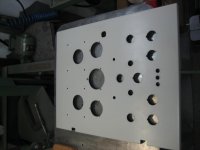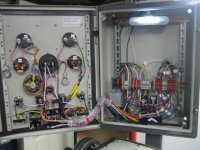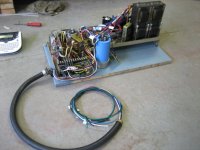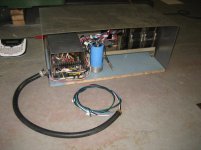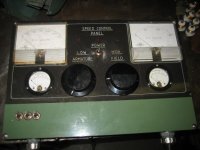Nightshift
Aluminum
- Joined
- Sep 22, 2007
- Location
- London, ON
Sorry for the delay in getting some pics up of my '52 EE (SN EE-36004). I've had several people here requesting and I'm finally getting around to it. It's been totally dismantled over the past 9 months with everything gone over with a fine tooth comb. Very little had to be done to this one, other than stripping off 4 previous paint jobs and repainting and a complete re-wire to eliminate the oil-soaked original wiring and controls. Like my other refurbs, I like all the switches and buttons in one place, so I built a new Allen Bradley control panel during the re-wiring. This one is still powered by the original Alliance 3hp DC motor, but I'm using a custom-built DC drive controller instead of the original AC motor/generator/exciter assembly. You will also notice I have raised it up 4.5" and hidden the riser blocks with a skirt that follows the shape of the base casting. It puts the floor to spindle measure at 48.5" which is much more comfortable for me. And I think the skirt makes it look like something Monarch might have done if they would have offered a riser kit option. The lathe does not have a taper attachment, but is pretty much fully tooled with everything else including 8" and 5" 3-jaws, 8" 4-jaw, 11" face plate, Hardinge Sjogren speed chuck (full 42-set 2J collets), Jacobs Rubberflex speed chuck (14 collet set), Aloris BXA and AXA tool posts, steady rest, etc.
I also have the original manual, documentation and wiring blueprints which are in pristine condition. The original owner had the good sense to photocopy everything when the machine was new, and provide the photocopys to the shop workers in order to keep the original documents from getting dirty. As all of you know, the 10EE is a beautiful lathe to operate, and this one will be in my shop for a long, long time! Cheers, Bill
I also have the original manual, documentation and wiring blueprints which are in pristine condition. The original owner had the good sense to photocopy everything when the machine was new, and provide the photocopys to the shop workers in order to keep the original documents from getting dirty. As all of you know, the 10EE is a beautiful lathe to operate, and this one will be in my shop for a long, long time! Cheers, Bill
Attachments
-
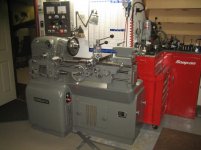 - Monarch 10EE (1952) SN 36004 20.jpg93.9 KB · Views: 1,060
- Monarch 10EE (1952) SN 36004 20.jpg93.9 KB · Views: 1,060 -
 - Monarch 10EE (1952) SN 36004 21.jpg92.5 KB · Views: 1,126
- Monarch 10EE (1952) SN 36004 21.jpg92.5 KB · Views: 1,126 -
 - Monarch 10EE (1952) SN 36004 22.jpg85.7 KB · Views: 929
- Monarch 10EE (1952) SN 36004 22.jpg85.7 KB · Views: 929 -
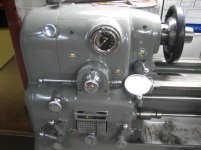 - Monarch 10EE (1952) SN 36004 23.jpg86.9 KB · Views: 1,577
- Monarch 10EE (1952) SN 36004 23.jpg86.9 KB · Views: 1,577 -
 - Monarch 10EE (1952) SN 36004 24.jpg89.8 KB · Views: 1,371
- Monarch 10EE (1952) SN 36004 24.jpg89.8 KB · Views: 1,371






